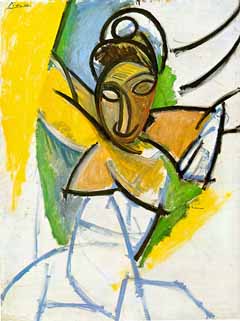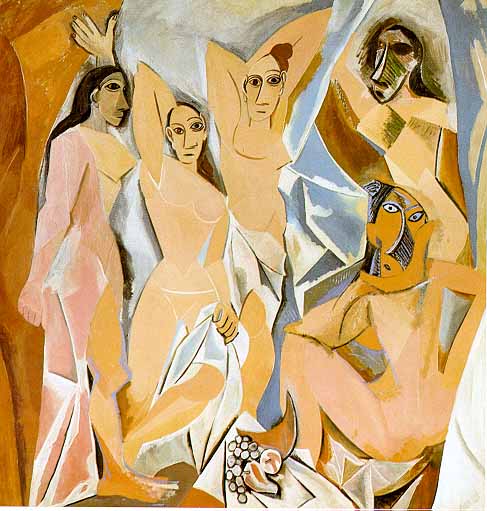| IV | |
| The
Cube's Progress
Me
& My
|
Give
me Visual five, please:
In some exhibits, you see the progression of a painting: a sketch, a study, another study, then a canvas partially painted . . . re/iterations until what appears as the culminating version. Only final because nothing came afterward. Progression as, yes, progression: each iteration also stands on its own, especially since the media are different, and often the paradigm is too-classic, cubist, surrealist. Something about this kind of writing is like that: ideas, voices, genres as displaced, displacing planes. Cue visual six. Cue sound three. Cubism is dynamic while static; it moves. It evokes vibrancy, a sense of dimension. It's tactile, almost. What is the role of performance in textuality? In art? Is cubism a performance? How does this relate to Goffman's notion of performance in everyday life? And if everyday life, can the readymade be far away? Sound
three:
Richard
Lanham cites the western visual arts as evidence that digital expression
is the fulfillment of "postmodern monumentality" whch conceptualizes composing
as an ongoing, perpetual project.
(Janangelo)
(Bartender,
another Manhattan for my friend, here.)
The move to the readymade seems right. Cubism is an interesting connection because it dramatizes (or performs) juxtaposition and disruption so readily, and this makes it a useful analog to a collagic essay approach. What it doesn't communicate so well is the sense of process that you're suggesting now--the movement from sketch to sketch to canvas and/or back again. And it doesn't convey the role of the reader in organizing the essay. Progress and
process. And actually, it is progression. Movement from one performance
to the next, but each is a performance in its own right. Those are the
"moments," yet each is also part of a progression here.
Cue
Visual seven
|


